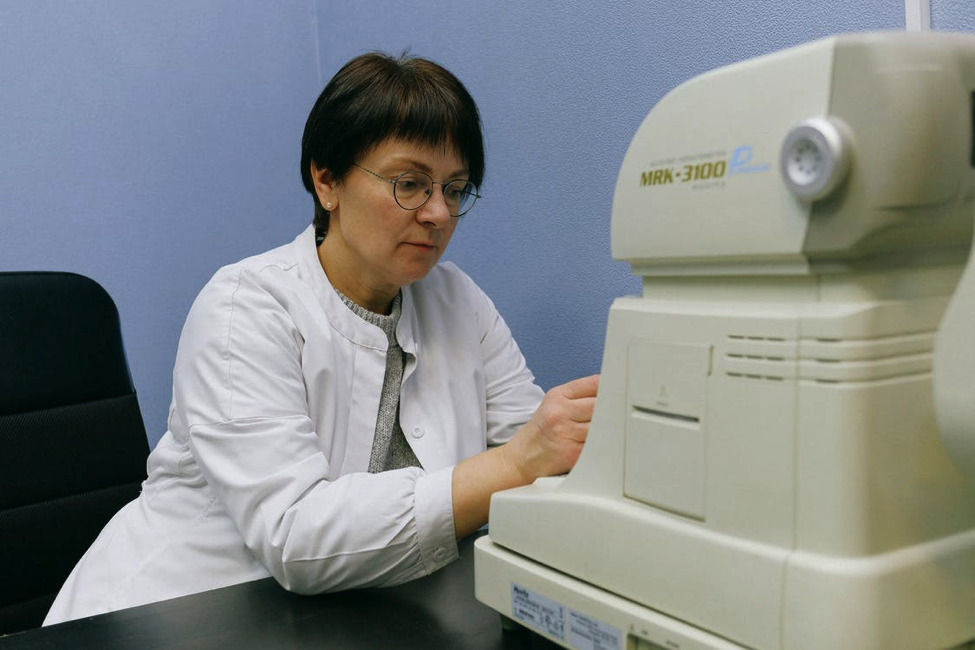Eye health is an essential part of our overall well-being, yet many of us often overlook the delicate balance required to keep our eyes clear of infections and irritations. Styes and other eye infections can be both uncomfortable and disruptive, affecting our daily lives.
In this article, we’ll explore what styes are, the range of eye infections that can occur, and provide actionable advice on treatment and prevention strategies. With the right knowledge and habits, you can keep your eyes healthy and reduce the likelihood of these common issues.
Ophthalmology / 25.11.2024
Exploring Innovations in Eye Care
- Eye care is being revolutionized by advanced tools and techniques, improving diagnosis and treatment options.
- Cutting-edge innovations like AI-driven diagnostics, wearable devices, and minimally invasive procedures are transforming outcomes.
- Emerging techniques, such as regenerative therapies and precision medicine, are addressing previously untreatable conditions.
- The future of eye care includes telemedicine and smart technologies, making treatments more accessible and tailored to individual needs.
 Eye care is undergoing a revolution. As technology evolves, so do the ways we diagnose and treat vision problems. For patients and professionals alike, this means a brighter future—literally and figuratively. From innovative devices to cutting-edge surgical methods, advancements in this field are transforming outcomes and making treatments more accessible.
In this blog, we’ll explore some of the challenges faced in eye care today, the breakthroughs addressing them, and the exciting tools and techniques shaping the future. Whether you’re curious about the tech behind these advancements or what they mean for your eye health, you’re in the right place.
(more…)
Eye care is undergoing a revolution. As technology evolves, so do the ways we diagnose and treat vision problems. For patients and professionals alike, this means a brighter future—literally and figuratively. From innovative devices to cutting-edge surgical methods, advancements in this field are transforming outcomes and making treatments more accessible.
In this blog, we’ll explore some of the challenges faced in eye care today, the breakthroughs addressing them, and the exciting tools and techniques shaping the future. Whether you’re curious about the tech behind these advancements or what they mean for your eye health, you’re in the right place.
(more…)
Author Interviews, Ophthalmology, PLoS / 20.01.2022
Study Finds Near-Sightedness (Myopia) Increases with Education and Greater Close Work
MedicalResearch.com Interview with:
Prof. Jugnoo S Rahi
Professor of Ophthalmic Epidemiology and Honorary Consultant Ophthalmologist
NIHR Senior Investigator
Head, Vision and Eyes Group UCL
HeadPopulation Policy and Practice Research and Teaching Department GOS ICH UCL
Director, Ulverscroft Vision Research Group
GOS Institute of Child Health UCL /
Great Ormond Street Hospital NHS Foundation Trust
Institute of Ophthalmology UCL /
NIHR Moorfields Biomedical Research Centre
Chair, Academic Committee
Chair, British Ophthalmological Surveillance Unit Executive Committee
Royal College of Ophthalmologists
MedicalResearch.com: What is the background for this study?
Response: We hypothesised that if changing environmental factors, in particular educational experience, are accounting for increasing frequency of myopia in the UK, a cohort effect would be discernible in changing associations with myopia, with different profiles for childhood and adult-onset forms. We investigated this using the UK Biobank Study, a unique large contemporary adult population sample whose members, born over a period of more than three decades, have undergone a detailed ophthalmic examination. This affords the opportunity to analyse ‘historical’ cohorts covering a period of important socio-demographic, economic, and educational change in the UK from which current and emerging trends may be identified and examined.
Drawing on our previous proof-of-concept study, we investigated whether there were differences between childhood-onset versus adult-onset myopia in temporal trends in both frequency and severity and in associations with key environmental factors.
(more…)
Below are some of the top ophthalmological advances for 2021:
1. Optical Coherence Tomography Optical Coherence Tomography or OCT is a noninvasive imaging technique that is used to secure cross-sectional, high-resolution imaging of the retina. The retina’s layers are differentiated while its thickness is measured to help detect and identify retinal conditions in its early stages. These retinal diseases may include macular degeneration, which is typically age-related, and diabetic retinopathy or diabetic eye disease. OCT testing is now a standard practice to assess and decide on specific treatments for many retinal problems. It utilizes light rays to measure the thickness of the retina without radiation and x-rays, a painless test that does not cause discomfort to the patient. The technology of OCT is similar to ultrasound though it uses light instead of sound, giving it a much clearer resolution. (more…)
Author Interviews, Macular Degeneration, Ophthalmology, PNAS / 27.10.2021
Fluoxetine – Prozac – May Be Beneficial for Dry Macular Degeneration
MedicalResearch.com Interview with:
Bradley D. Gelfand PhD
Center for Advanced Vision Science
Department of Ophthalmology
Department of Biomedical Engineering
University of Virginia School of Medicine
Charlottesville, VA 22908
MedicalResearch.com: What is the background for this study? Would you briefly describe dry AMD?
Response: Dry age-related macular degeneration (AMD) is a form of AMD that affects about 11 million people in the United States, and many millions more worldwide. Dry AMD is a disease affecting the macula, the central part of our retina that is responsible for fine visual acuity tasks - things like reading, driving, and recognizing faces. Dry AMD typically develops in people in their 6th, 7th, and 8th decades of life and begins with small changes to the retina that are unlikely to affect vision at first. As the disease progresses, it can develop into more advanced stages ("wet" AMD and geographic atrophy), which can cause blindness. Unfortunately, there is no approved treatment that can prevent dry AMD or its progression to advanced blinding stages.
(more…)
Author Interviews, Genetic Research, Ophthalmology / 08.06.2021
Caffeine Linked to Higher Risk of Glaucoma in Genetically Predisposed Patients
MedicalResearch.com Interview with:
Louis Pasquale, MD, FARVO
Professor of Ophthalmology
Icahn School of Medicine at Mount Sinai.
Site Chair of the Department of Ophthalmology
Mt. Sinai Hospital and Vice Chair of Translational Ophthalmology Research
Mount Sinai Healthcare System
MedicalResearch.com: What is the background for this study?
Response: Studies on the relation between caffeine intake and glaucoma have been contradictory, although our work suggested an adverse association amongst people with a self-reported family history of glaucoma.
(more…)
Author Interviews, Genetic Research, Ophthalmology, Science / 12.03.2021
Many More Genes Discovered to Play a Role in Eye Color
MedicalResearch.com Interview with:
 Dr Pirro Hysi
Senior Lecturer in Ophthalmology
Kings College London
MedicalResearch.com: What is the background for this study?
Response: - Iris (eye) color is an important human trait. It is one of the main features that makes our faces unique and recognizable. Iris color is similar to other pigmentatio traits, like hair and skin color, in that it is determined by the concentration and relative ratios of the melanin pigment. Pigmentation traits are roughly determined by several of the same genes regulating pigmentation, but many other genes seem to selectively determine pigmentation in any of these tissues.
(more…)
Dr Pirro Hysi
Senior Lecturer in Ophthalmology
Kings College London
MedicalResearch.com: What is the background for this study?
Response: - Iris (eye) color is an important human trait. It is one of the main features that makes our faces unique and recognizable. Iris color is similar to other pigmentatio traits, like hair and skin color, in that it is determined by the concentration and relative ratios of the melanin pigment. Pigmentation traits are roughly determined by several of the same genes regulating pigmentation, but many other genes seem to selectively determine pigmentation in any of these tissues.
(more…)
 Dr Pirro Hysi
Senior Lecturer in Ophthalmology
Kings College London
MedicalResearch.com: What is the background for this study?
Response: - Iris (eye) color is an important human trait. It is one of the main features that makes our faces unique and recognizable. Iris color is similar to other pigmentatio traits, like hair and skin color, in that it is determined by the concentration and relative ratios of the melanin pigment. Pigmentation traits are roughly determined by several of the same genes regulating pigmentation, but many other genes seem to selectively determine pigmentation in any of these tissues.
(more…)
Dr Pirro Hysi
Senior Lecturer in Ophthalmology
Kings College London
MedicalResearch.com: What is the background for this study?
Response: - Iris (eye) color is an important human trait. It is one of the main features that makes our faces unique and recognizable. Iris color is similar to other pigmentatio traits, like hair and skin color, in that it is determined by the concentration and relative ratios of the melanin pigment. Pigmentation traits are roughly determined by several of the same genes regulating pigmentation, but many other genes seem to selectively determine pigmentation in any of these tissues.
(more…)




